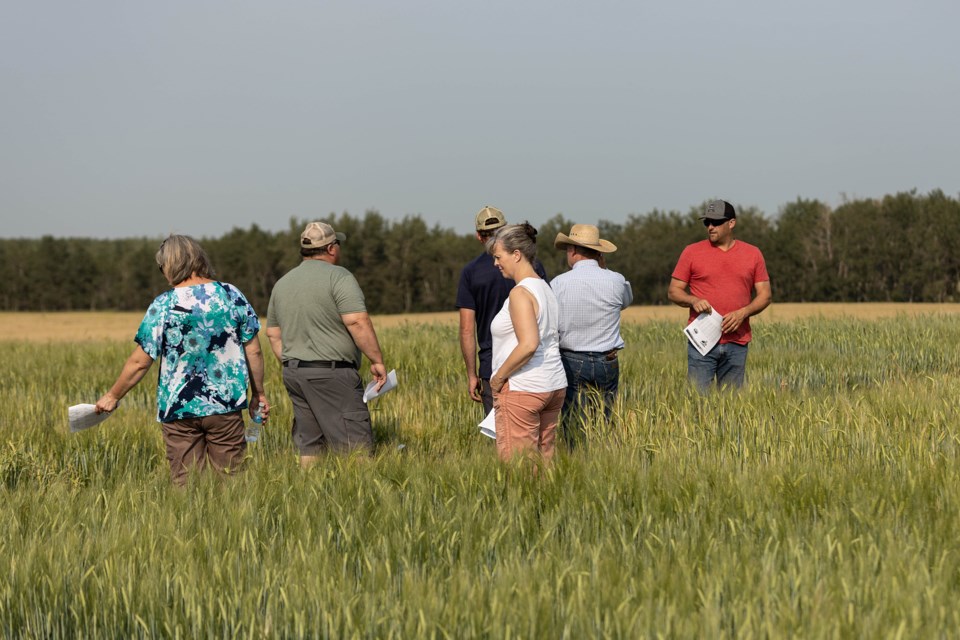LAKELAND - The Lakeland Agricultural Research Association wrapped up its summer field tours in Mallaig on Aug. 5. And while a few rain drops fell from the sky as participants were waiting to load up the bus to visit the trial plots, much of the event occurred in very warm, dry temperatures - a typical story for much of Alberta this growing season.
According to Kellie Nichiporik, Environmental Program Manager with LARA, the organization had really good attendance at all three of its sites during this year's field tours. A tour was held in Fort Kent at the LARA Research site on July 28, and one was held earlier in the summer near Smoky Lake on July 22.
"Each one had different trials to look at... but also each municipality houses our flagship trials, the regional variety trials. These are done on both a variety of silage blends, as well as monocultures, as well as for cereals, grains."
The regional variety trials are important, explains Nichiporik, adding, this is information that is valued by producers because they can see what grows best in the Lakeland, specifically.
"It is hard to believe, but between each municipality there is a great deal of variation as to what grows best where," says Nichiporik. "These results are not only published in our annual reports, but also in the Alberta Seed Guide, as these results get compiled with the other Research Associations across the province."
Following the tour in Mallaig, Lotte Kingsmill spoke to attendees about nitrates and the use of salvage crops for livestock feed.
"Due to drought stress, many plants have shut down, which can keep an accumulation of nitrates in the plant that the livestock could eat. (Kingsmill) has tested many fields and has seen a rise in the amount of nitrates, which is a huge concern for livestock loss due to nitrate poisoning," explains Nichiporik. "Testing any of your feed that you are going to be using this year is important, even now putting livestock out on a new pasture as the nitrate level can be highly toxic."
There is no doubt that this season has handed those involved in agriculture a laundry list of challenges.
"A very dry spring, coupled with the increasing amount of wind, the heat dome, and the continuation of hot and dry conditions has taken a toll on the crops in the area, as well as our trials," says Nichiporik. "LARA is just starting to harvest our silage trials, so it will be interesting to see what yields do in comparison to last year. There are definitely some areas that are more affected than others, as there were a few sporadic showers that very few fortunate producers received."
Canola, she believes, will be the hardest hit, as yields will be dramatically lower due to the heat blast that resulted in aborted pods. There has also been a high amount of ascochyta - a fungi - found in pea crops this year.
Maturity of crops is highly variable in each field, so farmers will likely be scouting while making harvest decisions.
"Drought is something that most producers have experienced before, however such widespread drought that covers the entire Prairies is unprecedented. This makes management, especially for livestock extremely difficult as there will be feed shortages from across Manitoba to British Columbia," says Nichiporik.




